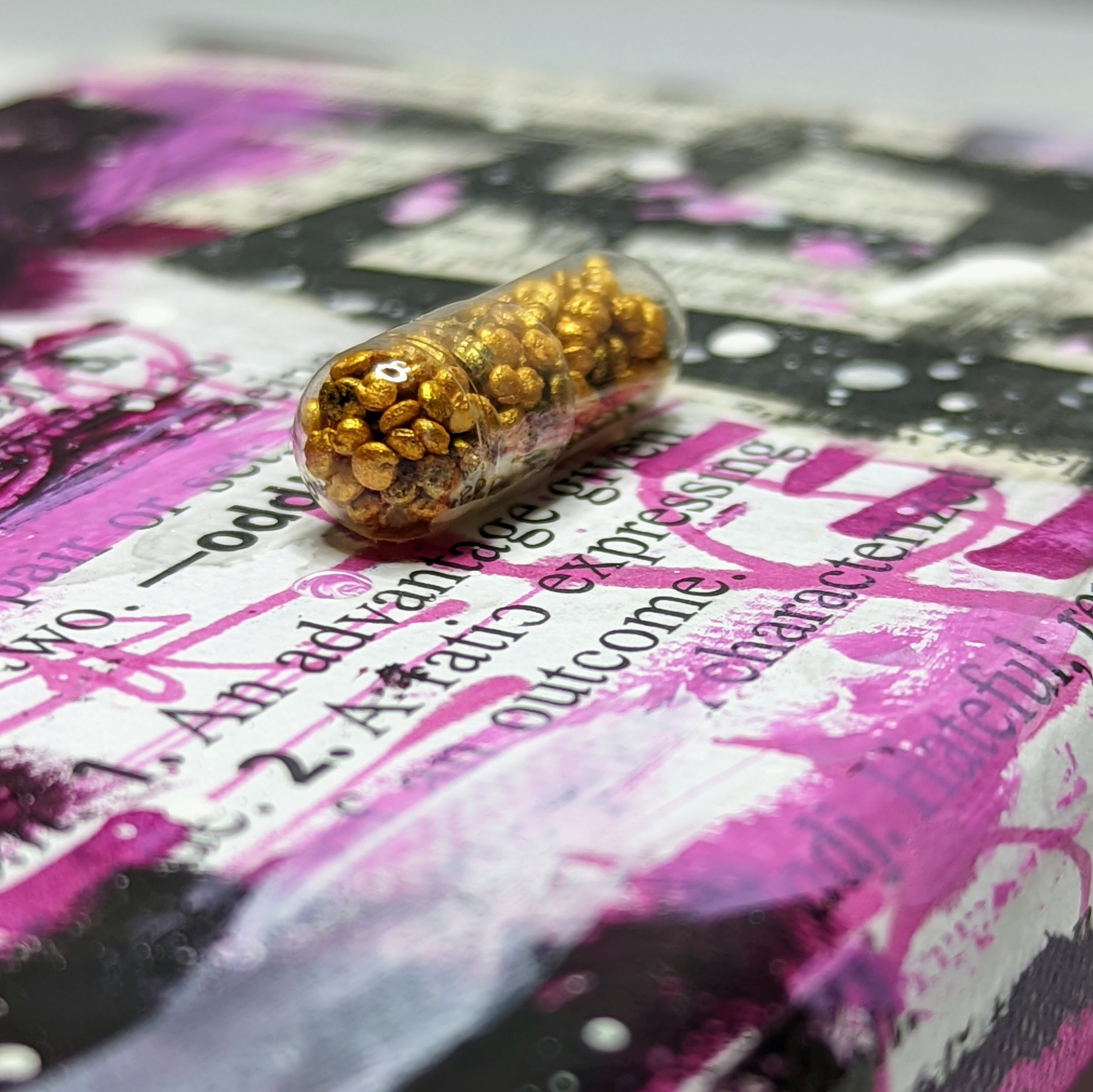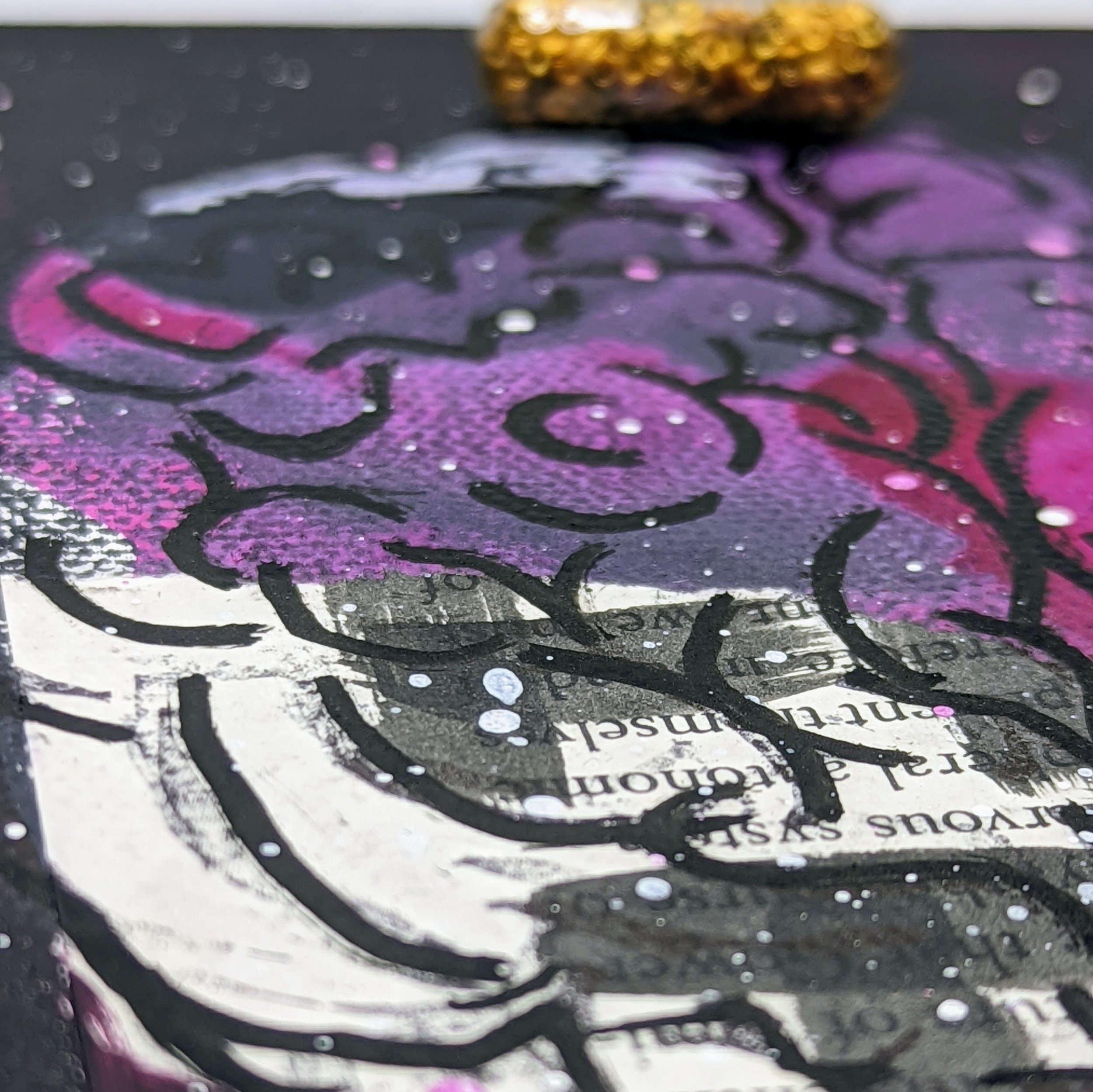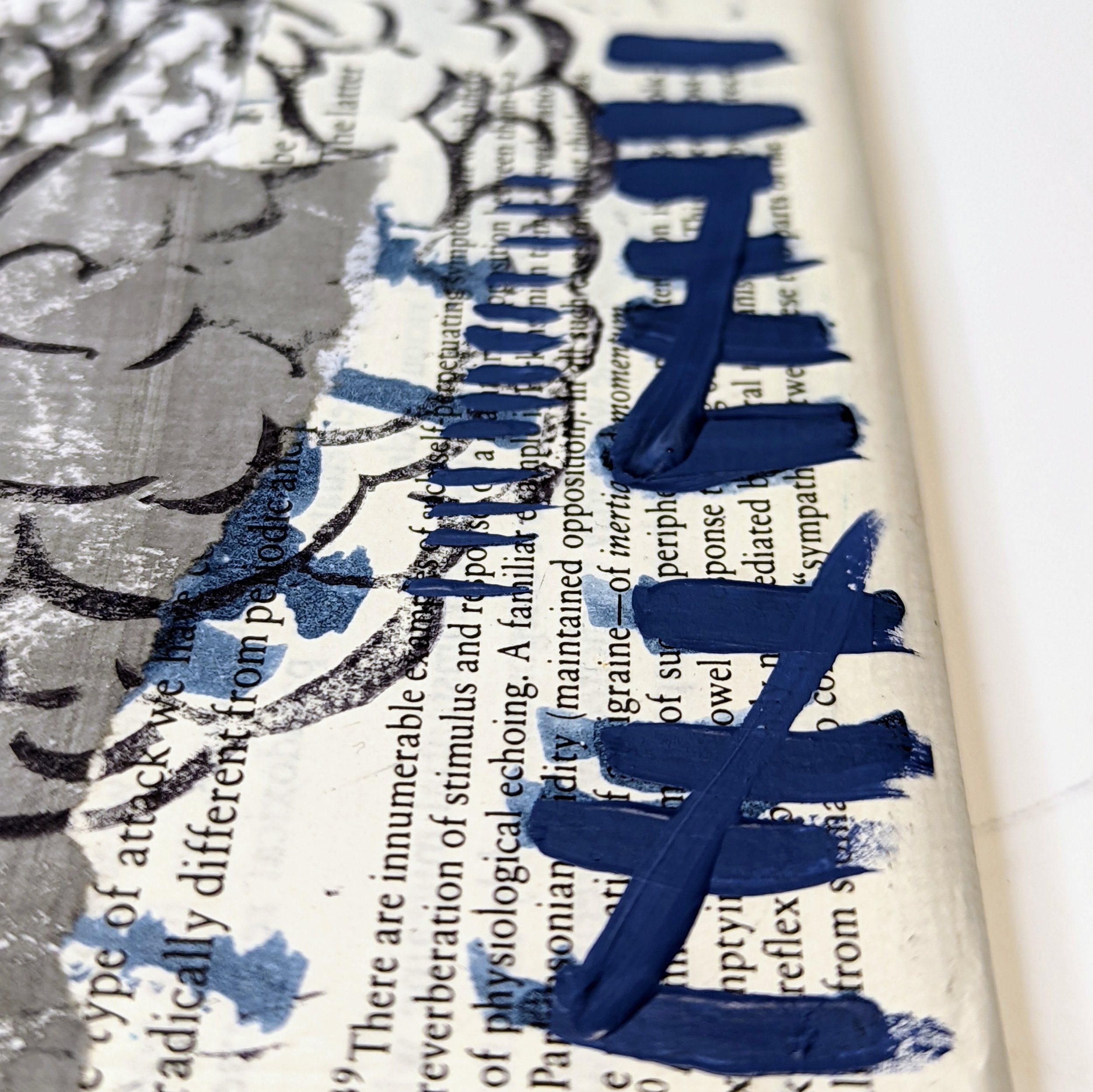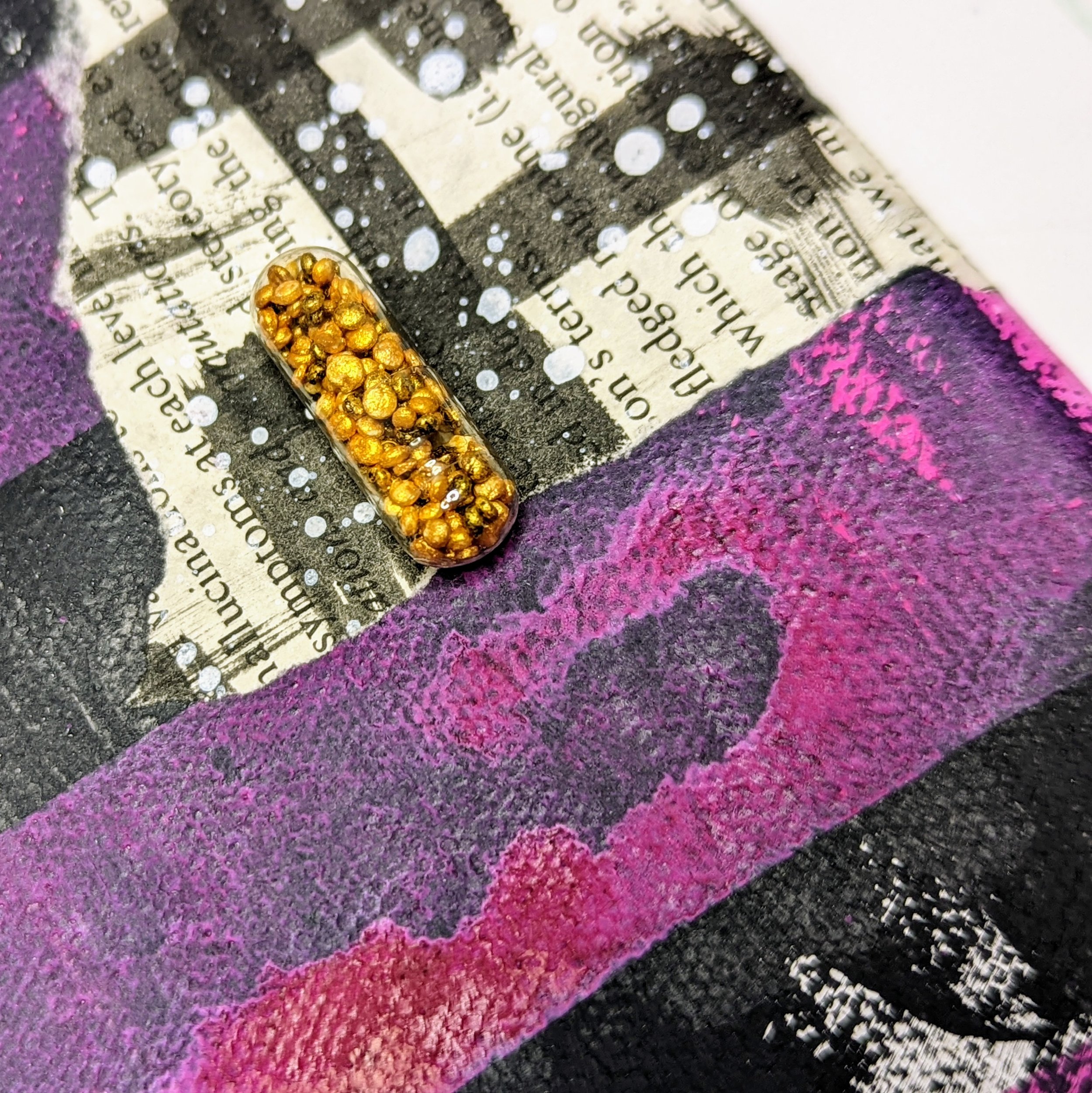Why a vintage dictionary?
My first print was a blue and red monoprint, pulled from a piece of glass on a page torn from a vintage dictionary.
Why?
Why those colors? Why glass? Why a dictionary?
Let’s start with the easy answers: I felt inspired to make something, and paint, glass, and a dictionary were within arm’s reach. I also happened to have a brayer*, thank goodness, or this never would have happened.
Let’s peel back some layers on the dictionary choice. Why would I have a vintage dictionary just sitting around?
I am (or was) a reading and English teacher
I am a poet (published, even!)
I have taken a few courses in linguistics, and I am a word nerd
I found this old dictionary at the thrift store, it was damaged along the spine, and I decided to rescue it
I used to write poetry about my experience with migraine disease, but it was becoming harder to find the words to express the phenomenon of phasing in and out of wordlessness. But a dictionary?! It offered endless opportunities for a visual representation of what I wanted to convey!
Fast forward to now: I have curated over a dozen dictionaries and thesauruses in three languages, varied formats and editions. These pages find their way into paintings large and small. So do pages of Shakespeare, vintage cookbooks, philosophy. When I made a full collection of migraine-inspired art, I used the book Migraine by Oliver Sacks in conjunction with a large-print dictionary.
These pages help infuse the work with meaning. And art is a meaning-making process— the creation, consumption, curation, collection of art requires meaning to be created and negotiated.
And that’s why dictionaries.
*a brayer is a fancy name for a paint roller used in printmaking. I have four of them now.





